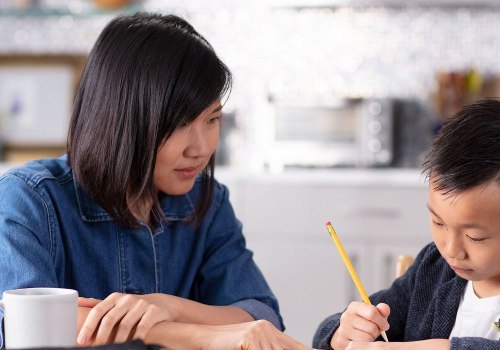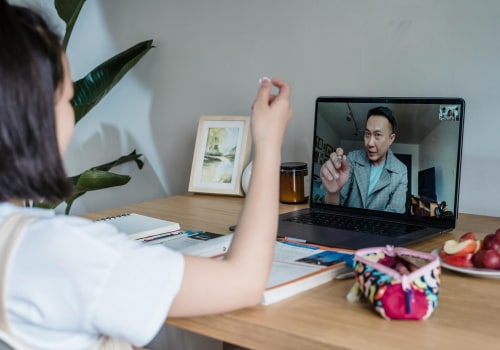In today's diverse and ever-changing educational landscape, it's essential to find a tutor who can cater to the unique needs and learning styles of each student. With so many different teaching methods available, it can be overwhelming for parents and students to determine which approach is best suited for their specific needs. That's why we've created this comprehensive guide to help you navigate the world of tutoring and find the perfect fit for your educational journey. Whether you're a student looking for extra support or a parent seeking the best education for your child, this article will provide valuable insights into the various teaching methods and how to choose the right one for you.
So let's dive in and discover the world of different teaching methods and their suitability for different students. When it comes to finding the perfect tutor, it's important to consider the different teaching methods available and how they suit different types of students. In this article, we will explore the traditional teaching methods as well as some more modern approaches, so you can make an informed decision on the best tutor for you. Firstly, let's take a look at traditional teaching methods. These involve a teacher-led approach where information is presented to students in a structured manner. The teacher acts as the main source of knowledge and directs the learning process.
This style is best suited for students who prefer a more structured learning environment and can easily follow instructions. These methods are commonly used in schools and have been for many years. On the other hand, if you are someone who enjoys hands-on activities and interactive learning, you may want to consider project-based learning. This method allows students to work on real-life projects and encourages critical thinking and problem-solving skills. It also allows for a more collaborative learning environment where students can work together and learn from one another. Another popular teaching method is differentiated instruction, which focuses on tailoring lessons to meet the individual needs of each student.
This approach recognizes that every student has unique learning styles and abilities and therefore requires different approaches to learning. By personalizing lessons, teachers can better engage their students and help them reach their full potential. Finally, there is the flipped classroom model, where students learn at their own pace through online resources and then come together in class for discussions and activities. This style is ideal for self-directed learners who are comfortable with technology. It also allows for a more flexible learning experience, as students can access materials whenever and wherever they want. Whether you are in London, Edinburgh, Manchester, Glasgow, Newcastle, Bristol, Birmingham, Liverpool, or Brighton, there is a tutor out there for you.
By understanding your learning style and preferences, you can find the right tutor who will provide you with the most effective teaching method for your needs.
Traditional Teaching Methods
Traditional teaching methods have been used for centuries and involve a structured learning environment for students who can follow instructions. This method is often used in classrooms with larger groups of students, where the teacher provides lectures and assignments for students to complete. The focus is on the teacher as the main source of knowledge and the students are expected to listen, take notes, and complete tasks independently.Flipped Classroom Model
The flipped classroom model is a popular teaching method that has gained traction in recent years. This approach involves students learning through self-directed activities and using online resources to supplement their learning.Instead of the traditional classroom setting where the teacher presents new material, in a flipped classroom, students are given pre-recorded lectures or videos to watch at home, freeing up class time for more interactive and hands-on activities. This method is particularly useful for students who prefer to learn at their own pace and have access to technology. It allows them to take control of their learning and review material as needed. Additionally, using online resources can cater to different learning styles, such as visual or auditory learners.
By flipping the classroom, teachers can also better utilize their time in class by focusing on discussions, group work, and individualized attention for students who may need extra help. This approach has been shown to increase student engagement and motivation, leading to better learning outcomes. If you are a student who thrives on self-directed learning or a parent looking for a tutor who can cater to your child's needs, the flipped classroom model may be the perfect fit.
Differentiated Instruction
Differentiated instruction is a teaching approach that involves tailoring lessons to meet the individual needs of each student. This method recognizes that every student has different strengths, weaknesses, and learning styles, and aims to create a learning experience that is personalized and effective for each student. With differentiated instruction, the teacher assesses the needs of each student and adjusts their teaching methods accordingly.This can include varying the pace of instruction, using different materials and resources, and providing different levels of support and challenge for students. This approach is particularly beneficial for students who may struggle with traditional teaching methods or have special educational needs. It allows them to learn at their own pace and in a way that suits their learning style, increasing their engagement and understanding of the material. Whether you are a visual, auditory, or kinesthetic learner, differentiated instruction can cater to your unique needs and help you reach your full potential. So if you are looking for a tutor who can personalize their teaching to fit your individual needs, look no further than differentiated instruction.
Project-Based Learning
One of the most effective teaching methods for students who learn best through hands-on activities and critical thinking is project-based learning. This approach involves students working on a long-term project that requires them to apply the knowledge and skills they have learned in a practical and meaningful way. Project-based learning allows students to actively engage with the material, promoting deeper understanding and retention.It also encourages collaboration, communication, and problem-solving skills, which are essential for success in today's world. By immersing themselves in a project, students are able to see the real-world applications of what they are learning and develop a sense of ownership and pride in their work. This can be especially beneficial for students who may struggle with traditional teaching methods or have a hard time staying focused in a classroom setting. With project-based learning, students are given the opportunity to explore their interests and passions while also developing important skills. It is a great way to personalize learning and cater to the unique needs of each student. If you are looking for a tutor who incorporates project-based learning into their teaching style, you've come to the right place! Our guide to finding the perfect tutor in the UK will help you find someone who can provide hands-on activities and critical thinking opportunities for your child. As you can see, there are various teaching methods available, each with its own benefits. When choosing a tutor, it is essential to consider your learning style and needs.
Don't be afraid to ask potential tutors about their teaching methods and how they can cater to your individual needs. With the right tutor and teaching style, you can achieve your academic goals and excel in your studies.










